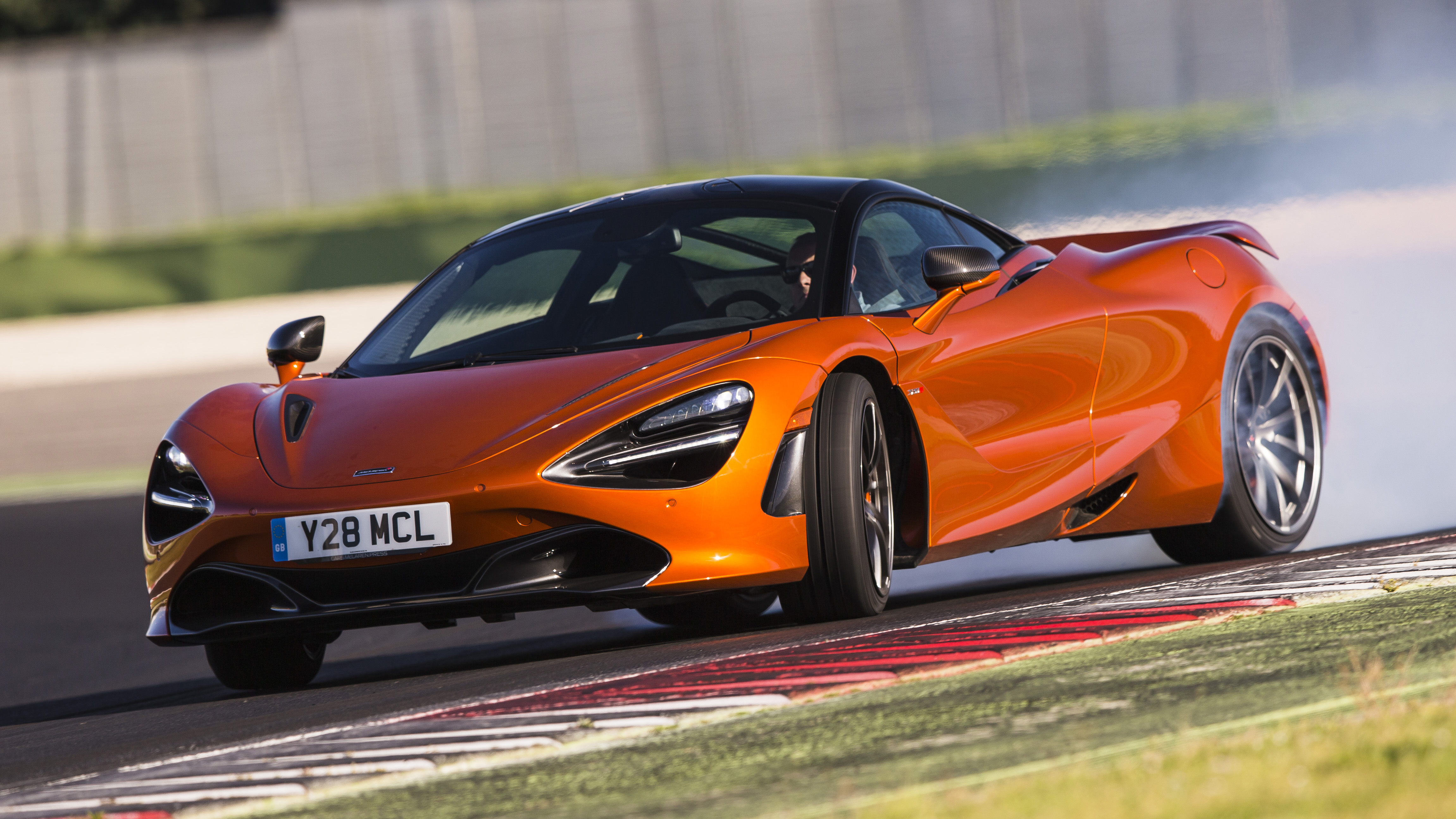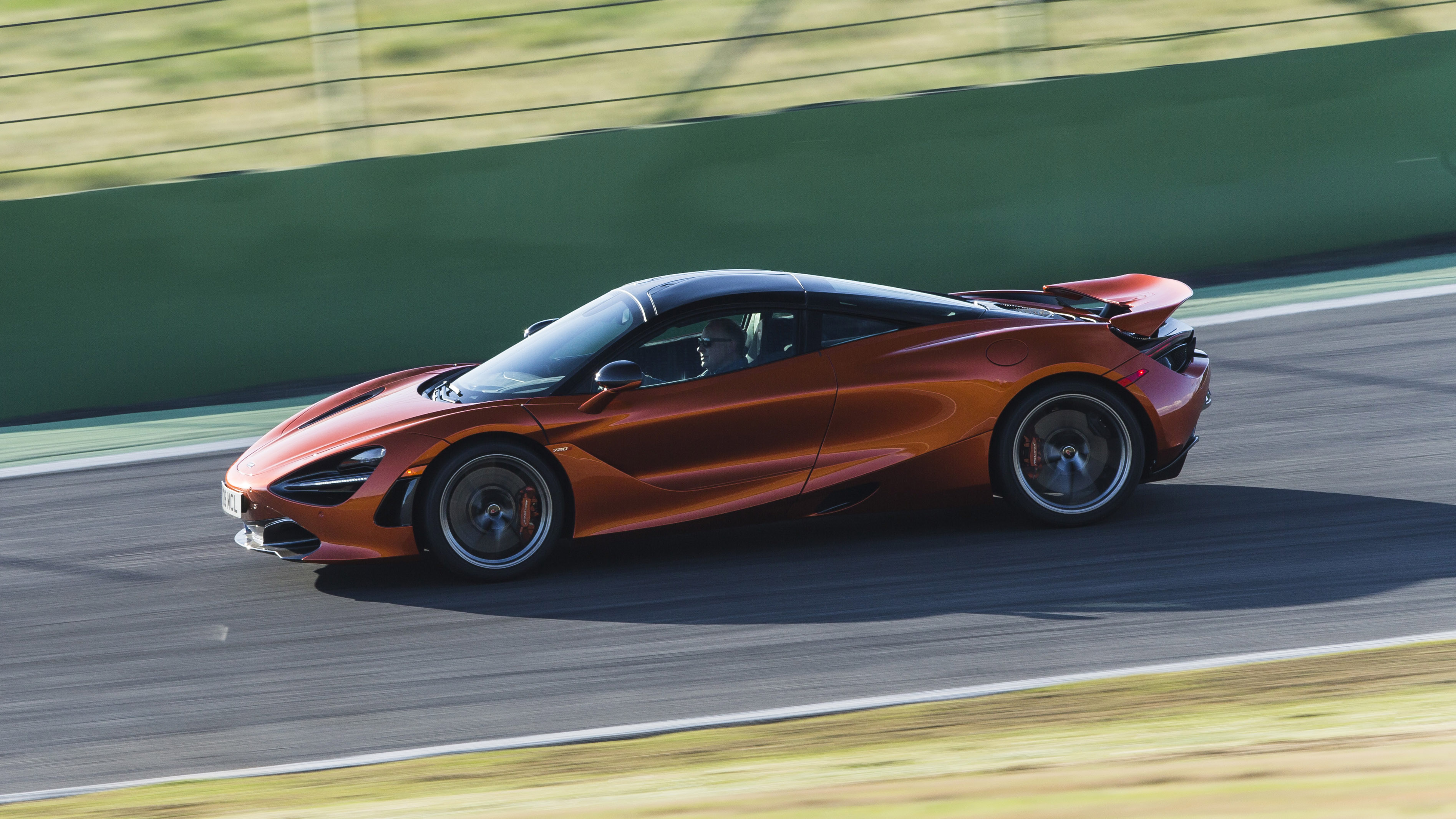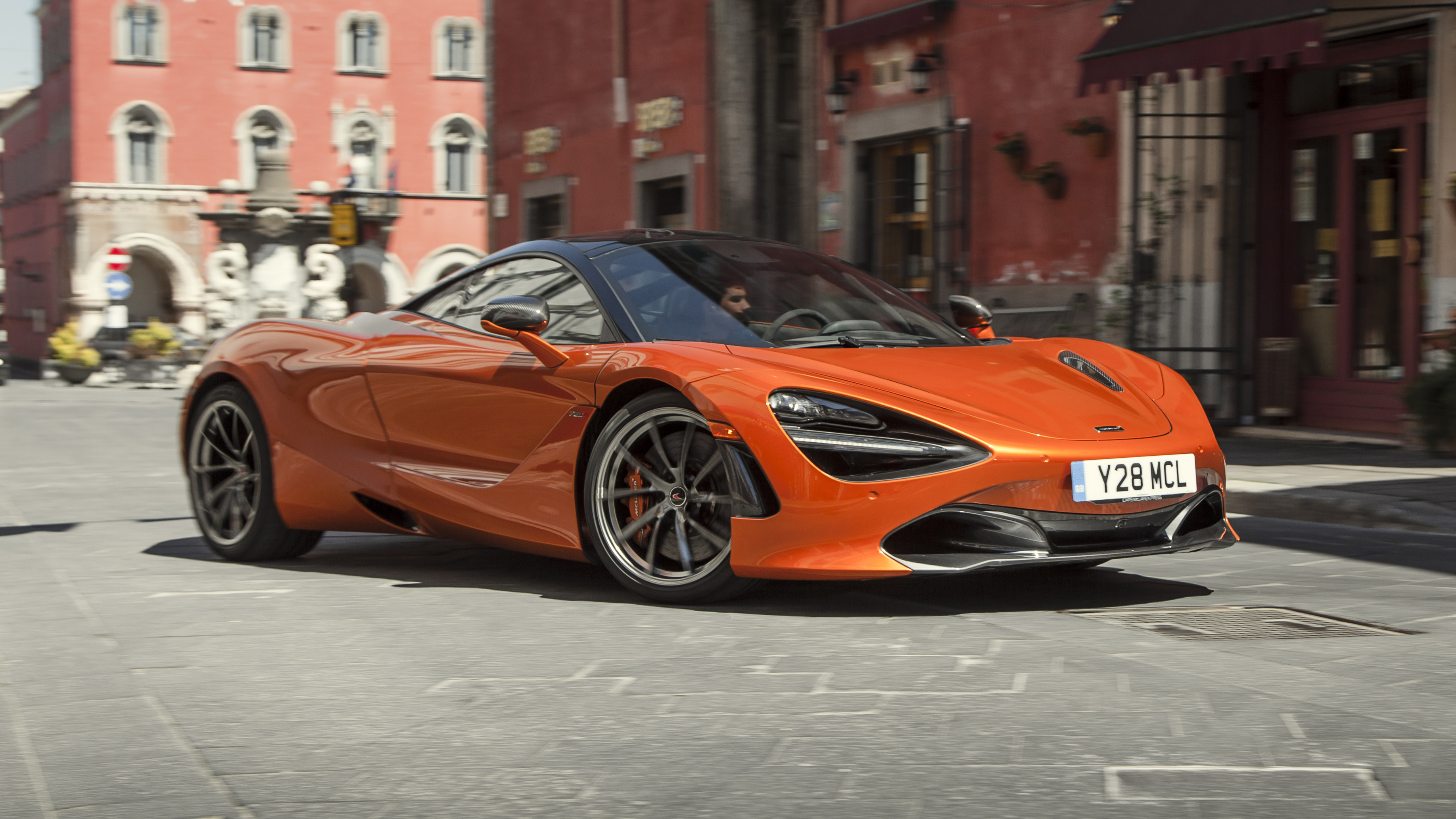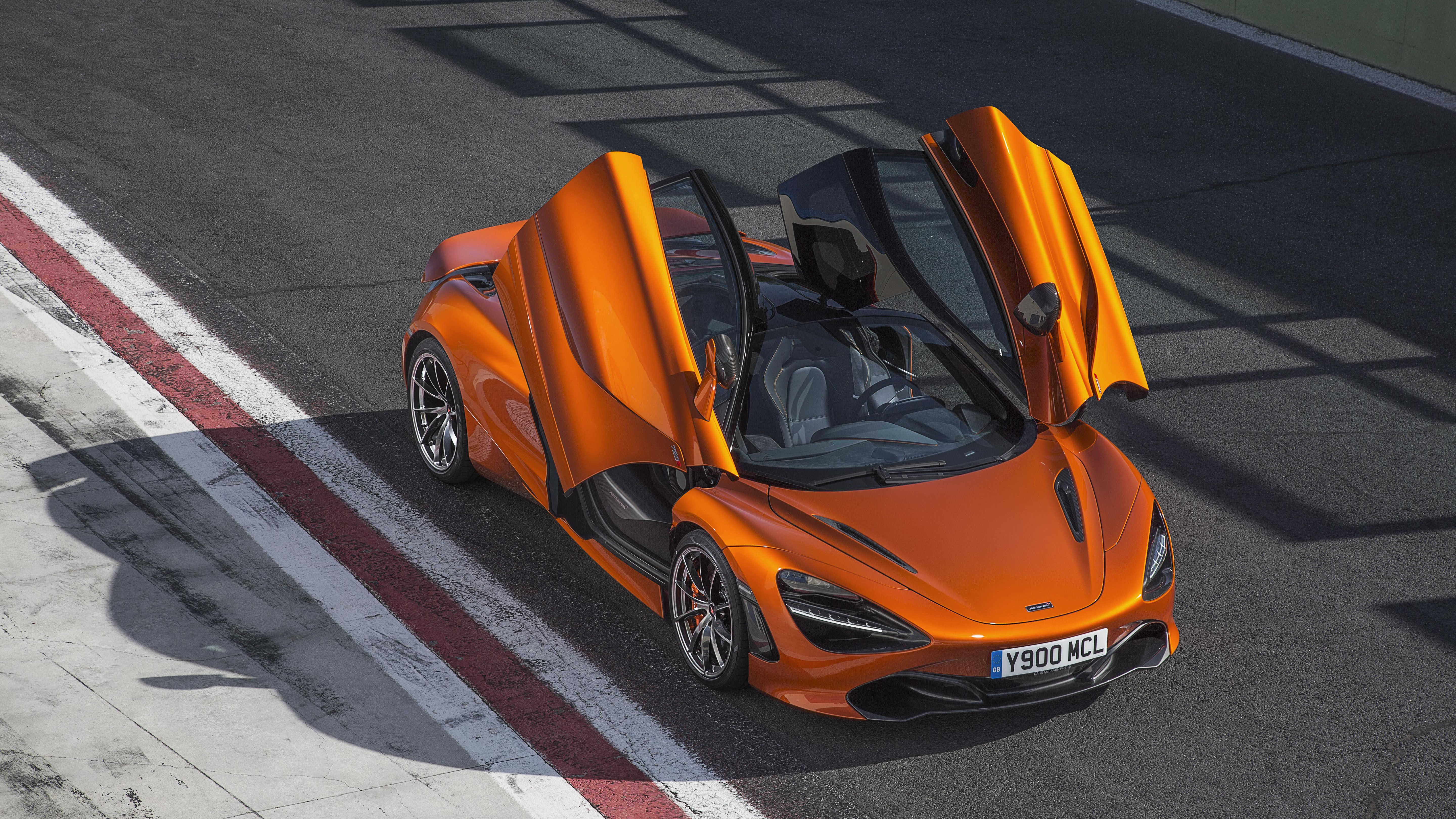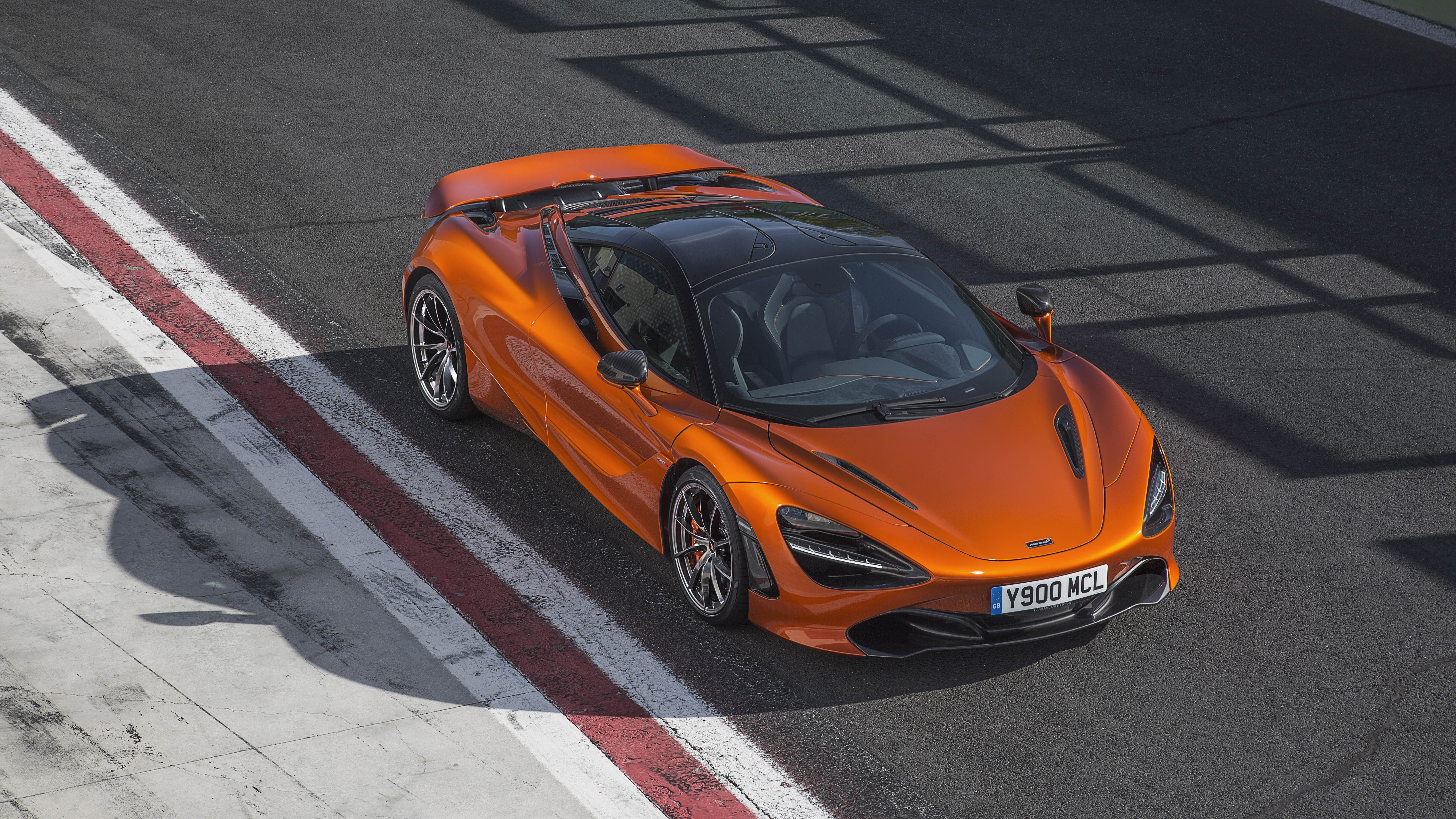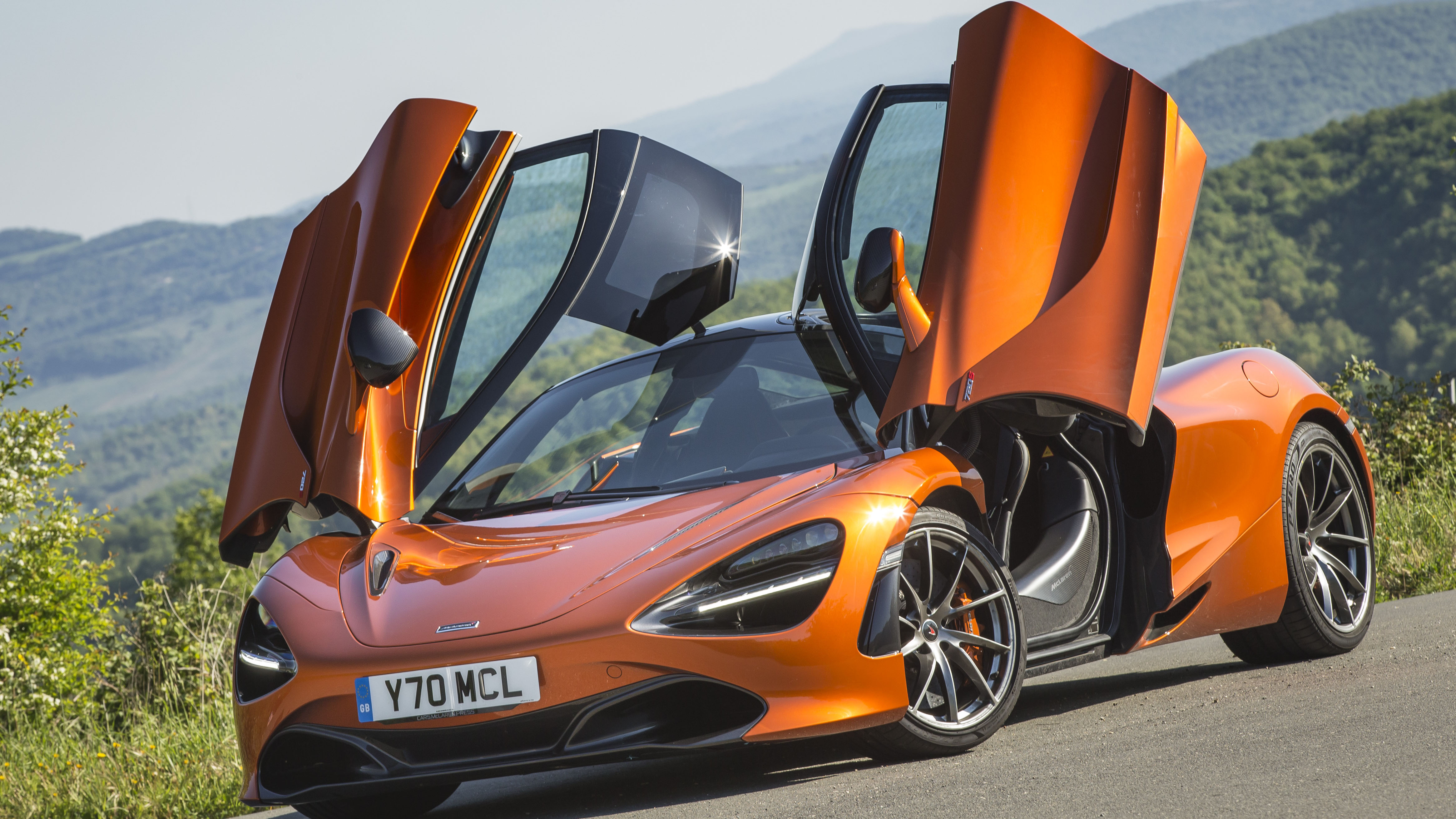
McLaren 720S review: 710bhp supercar put to the test
The McLaren 720S. At last...
Few car companies are mapping out the same intergalactic trajectory as McLaren. From a standing start less than a decade ago, Woking’s finest have ridden out some early speed bumps and gone on to blow our collective minds with the likes of the 570S, 675LT, and P1. They’re on course to sell 4,000 cars this year, it’s a less uptight place than it used to be, and the 720S signals another major milestone: this is the first time McLaren has completely replaced one of its core cars.
Time to push the giant re-set button?
In some ways, yes. McLaren Automotive has the sort of restless, questing spirit you’d associate with a tech start-up, and the 720S demonstrates the company’s preparedness to veer off at some unusual tangents, visual and otherwise, as well as addressing the areas that misfired first time round. McLaren says 91 per cent of the 720S is new, and the enlarged 4.0-litre engine features 41 per cent new content: turbos, intercoolers, cast-aluminium plenum, cylinder heads, crankshaft, pistons, and exhaust.
Topline numbers include 710bhp, 568 torques, 249 CO2s, 0-62mph in 2.9 seconds, 0-124mph in 7.8, and 0-186mph (300km/h, if you prefer) in 21.8. There’s also some seriously funky new software to go with the hard bits, and a handful of theatrical flourishes. The doors are double-skinned dihedral jobs that open to 80°, and the engine isn’t just visible through the rear screen, it’s also illuminated.
Lots of sleepless nights, then.
Development work started back in 2013, before the 650S had even been announced, and a big chunk of it was done virtually. The first full validation car was only built and driven 11 months ago, so its path to market has been extremely rapid. The aero work is off-the-scale: the panel ahead of the front wheels evacuates the turbulent high pressure air away and along the side to increase downforce, while a channel at the top of the doors ducts high velocity cooling air into the radiators in the engine bay. There are no bodywork slashes here, despite its mid-engined configuration. The 720S generates 50 per cent more downforce than the 650S managed at full tilt, has double the overall aerodynamic efficiency, and is 15 per cent more efficient in its cooling.
McLaren says it was targeting the excitement of the 675 LT and the refinement of the 570 GT, which are lofty and possibly incompatible goals. It’s also worth remembering that the 720S is pretty much P1-fast in certain increments, and has similar braking capability (from 124mph to standstill in 4.6 seconds across just 117m). Crazy stuff. But it’s also designed to be useable every day, accessible and non-threatening even to numpties, and emits a relatively cuddly 249 CO2s. On paper, it’s almost miraculous.
Sounds too good to be true. Is it?
Well, it’s certainly good. In fact, we’d go so far as to say this is probably the single most accomplished supercar we’ve ever driven, which is not the sort of statement we make lightly. Remember, though, that McLaren was burned back in the day by a perceived lack of soul in its early cars, and we all know that it’s the indefinable bits that usually elevate a supercar. First impressions here are great: steering feel is impossible to measure objectively, but the 720S has that road/car/driver telepathic thing absolutely nailed – it moves like a big Lotus Elise.
Top Gear
Newsletter
Thank you for subscribing to our newsletter. Look out for your regular round-up of news, reviews and offers in your inbox.
Get all the latest news, reviews and exclusives, direct to your inbox.
It’s monumentally fast, possesses the sort of high-speed balance and stability that bespeaks absolute mastery of aerodynamics, and somehow refuses to punish you even on truly execrable road surfaces. According to product director Mark Vinnels, "the challenge was to revolutionise the segment. But we also wanted to make a big leap in entertainment. We want to combine performance, emotion, refinement and efficiency in a single, beautiful whole." The 675 LT is one of the most engaging cars ever made by anyone ever: has McLaren pulled off the same trick here, while dialing down on the aggression?
Remind me what’s under the skin?
Lots of carbon fibre. Dubbed ‘Monocage II’, the chassis structure now incorporates an upper structure and windscreen surround, so it’s even more rigid than the 650. Lighter, too: its lightest dry weight is 1,283kg, 18kg less than the equivalent 650S. There’s an enhanced centre of gravity, thanks to the engine being mounted 150mm lower than before. A ‘visible monocage’ that exposes the material on the inside of the A-pillar is a £3,990 option (more on all that later: things can get very costly indeed). The cowl is also lower: like the magnificent 570, the 720S gets closer to serving up the jet fighter sensation than anything else on the road, and its vision all-round is peerless. The all-glass cockpit isn’t just pretty, it means you can traverse London without mowing down a peloton of cyclists, or reverse park the thing without knackering your street cred. Or the alloys.
More driving impressions now, please.
How edgy do you like your 700bhp-plus mid-engined supercars to be? Having received a pre-flight instruction from a McLaren operative (not that daunting), and easing our way through early-morning Rome traffic (pretty sticky), here’s the thing: the 720S is easy to drive. Really easy. Common sense demands acclimatisation, but you get settled incredibly quickly. Tyre noise and mechanical thrum is negligible at regular cruising speeds. Turn up the heat and the McLaren does that thing all sub-3.0 seconds to 60mph cars do: compress time. You are here, now you are there: the bit in between is simply vaporised.
But rarely has the time-warp been performed with so little conspicuous drama. The twin turbos are ultra-low inertia, twin scroll jobs that spool up much faster to reduce lag and sharpen throttle response. The red line in first and second gear is 8,100rpm, 8,200 in the next four. Keep the throttle pinned throughout, and big numbers rack up very rapidly indeed. Shift times on the seven-speed dual-shift ’box are 45 per cent faster than even the 675 LT delivers. You can sense the chassis electronics doing their thing, but only just. The 720S’s limits are somewhere beyond sky-high and out in the stratosphere.
Noise?
McLaren has reworked the harmonics on the new exhaust system, and the optional Sports Exhaust (there goes another £4,750) uses an intake sound generator to pump more volume into the cabin via twin vents mounted between the seats on the rear bulkhead. In standard form, the 720S is just five per cent off the 570GT in terms of noise levels, so it can do the long-haul; the sports exhaust moves it much closer to the 675 LT on the audio spectrum. Overall, and purely subjectively, we’d still say a normally aspirated engine has the edge – a shout out here to Audi’s brilliant and rather under-appreciated R8 – but as turbo motors go, the 720S is a new benchmark. Especially if you do what McLaren calls a ‘hot start’, which means sticking it in track/track mode, at which point it emits an entirely pointless but highly enjoyable wail.
What else is new?
The 650’s multi-adjustable Proactive Chassis Control receives some intriguing revisions. As before, the dampers are interlinked at each corner, so there are no conventional anti-roll bars. There’s improved hardware, though: the uprights and double wishbones are new, reducing un-sprung weight by 16kg. As before, you can choose between Comfort, Sport, or Track mode according to location or intention. PCC II uses multiple sensors – 12 more than previously, including an accelerometer on each wheel hub – to monitor inputs from the road and measure the tyre contact patch. The information is processed in milliseconds by the ‘Optimal Controller’ algorithm, developed by McLaren in conjunction with a Cambridge University PHD research programme.
According to vehicle development director Ben Gulliver, the system can alter the valves in the dampers in a way that pre-empts changes in road surface rather than reacting to them. Chief test driver Chris Goodwin is particularly proud of the work done on the rear suspension geometry. "This car can conjure amazing grip and balance even on the bumpiest roads," he tells us. One other thing: the base Pirelli tyre (245/35 ZR19s on the front, 305/30 ZR20s on the rear – bespoke to McLaren) used by the 720S has the same performance as the old Trofeo track rubber. There is grip and compliance in equal measure, although the Ferrari 488 GTB runs it very close.
No sign of EPAS or an active rear axle?
Nope. "The hardware is still too heavy, the response times too slow," says Gulliver of the latter, while Goodwin jokes that McLaren will happily keep electro-hydraulic steering in business for a long time yet. On the 720S, the rack uses one software map, and the linearity of response and the dialogue that builds between you and the road is spectacular. A small but important point: the three-spoke wheel isn’t buried under a welter of buttons, it exists to steer the car and nothing else. Proper.
How does it feel on the track?
Vallelunga is relatively short but a lot of fun. But it’s also where we get to the heart of the matter: the 720S is so damned good it’s almost… undramatic. Dramatically undramatic. It’s that edgy supercar question again: do you need to be asking for planning permission on the ragged edge before decreeing something a ‘real’ supercar? Or do you just want to go ballistically fast, everywhere, rain or shine, with almost total impunity? The 720S isn’t clinical, but it is surgical.
The new Variable Drift Control, which, according to McLaren, "delivers additional enjoyment in Sport and Track modes, with finger-tip control of Electronic Stability Control intensity", is amusing, but you still need to be able to balance steering and throttle effectively, so why not just turn everything off? Goodwin reckons the system works like the nine-stage traction control in McLaren’s GT race cars, and the end game is finding the best set-up for whichever track you regularly visit. In other words, traction optimisation rather than control. Whatever your bag, turn all the electronics off and the sheer genius of the chassis is laid bare. What a machine this is.
And inside?
Inside, the 720S somehow combines the brutal ergonomic efficacy of a race car with the technical luxury of a contemporary GT. The drive mode controls now live in a vertical pod to the left of the wheel. The principal read-outs are housed directly ahead, and the ‘folding display’ is very cool, the idea being that you can focus on the key read-outs if you’re in maximum attack mode. The D, N and R buttons are in another pod that tapers towards the bottom. The doors eat into the roof, Ford GT40-style, and it really does feel like being at the pointy end of an arrow, only with much more control over your own destiny. The ‘human’ graphic on the climate control display is wearing a crash helmet. Nice touch. There’s also an awesome 1,280W audio system, and the speakers are a seamlessly integrated part of the interior topography. But the sat nav drove me mad, and the seat controls are difficult to reach (£2730 for heated electric seats btw). Turns out they’re one of the few things carried over from the 650S.
Hmm. Sounds like maybe we should order ourselves one.
It’s as intriguing as you’d hope, the 720S. All 400 launch-spec cars are long gone, and 1,400 cars have been ordered before the first 720S has even left the factory. McLaren, it seems, has hit the motherlode. Only a full-blooded back-to-back test against the Ferrari, preferably on British roads we know, probably somewhere in north Wales, will reveal the complete picture. Mind you, on power alone it vaults itself ahead of its Italian rival, which might bring the new 488 Speciale (or whatever it’ll be called) onto the front-burner. The 720S is magnificent, but also surprisingly nuanced for such an adrenalised proposition. It takes time to work out the full scale of its, and its creators, achievements. It’s also worth noting that our test car lifted the £218,020 list price to £292,000-plus, and that the full carbon look, inside and out, doesn’t come cheap. To put it another way: how does a McLaren 570GT and a Porsche 911 GT3 sound?
Featured

Trending this week
- Car Review
BMW 1 Series
- Top Gear's Top 9
Nine dreadful bits of 'homeware' made by carmakers




